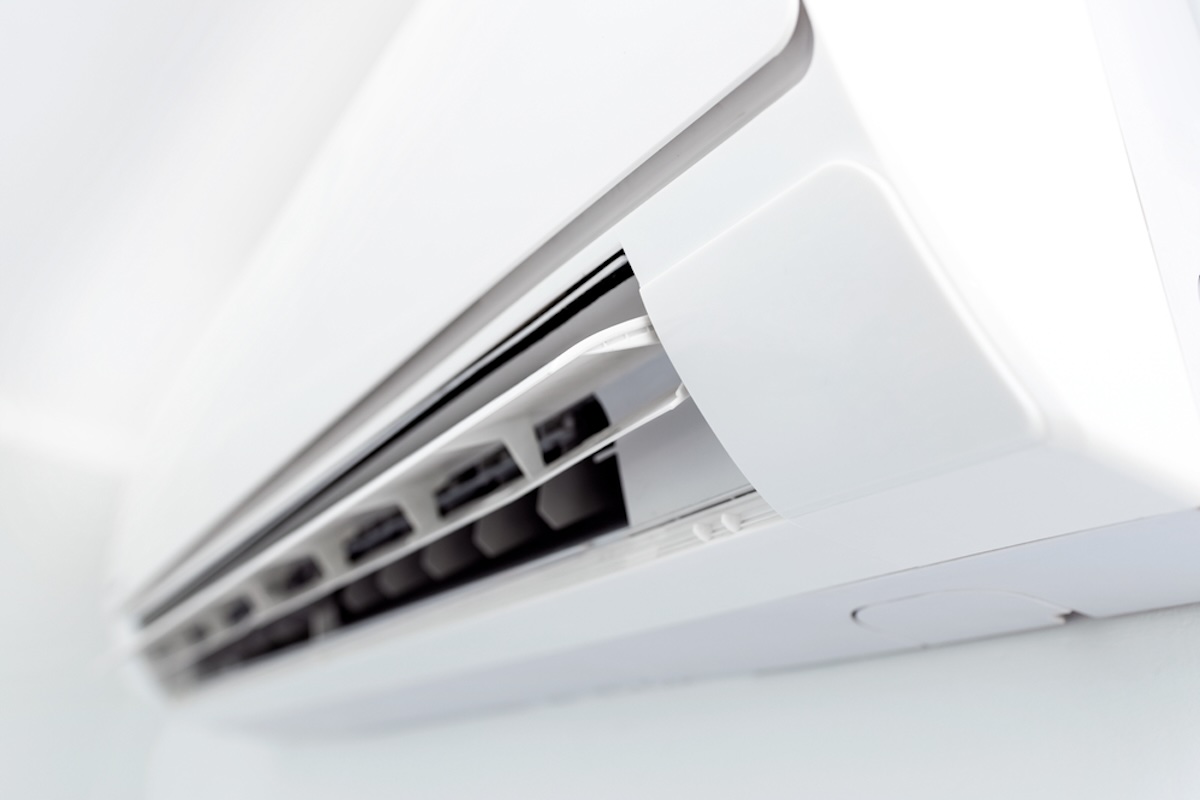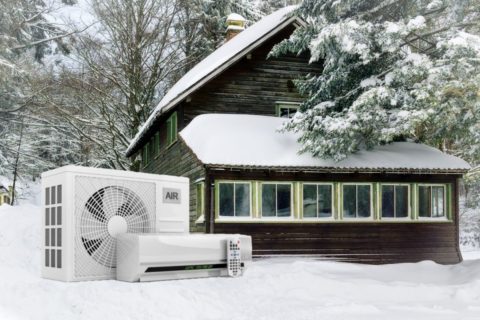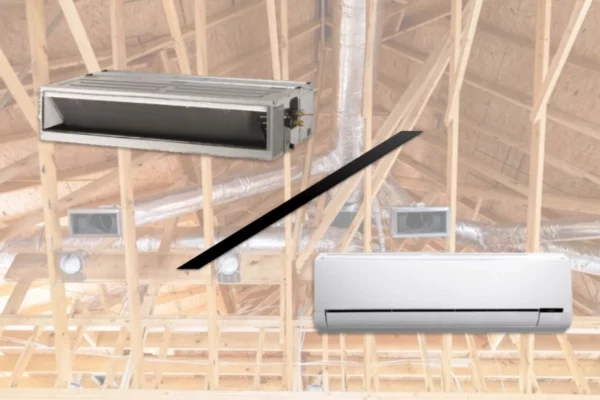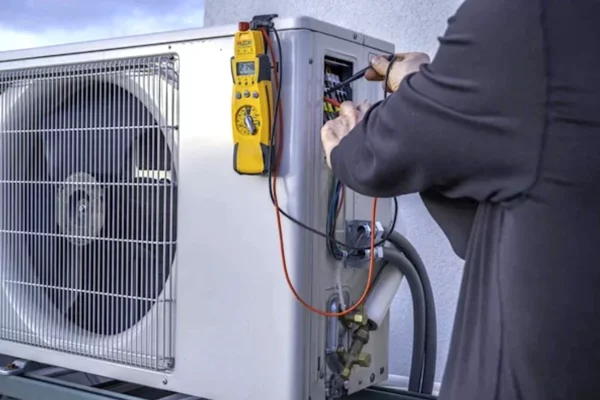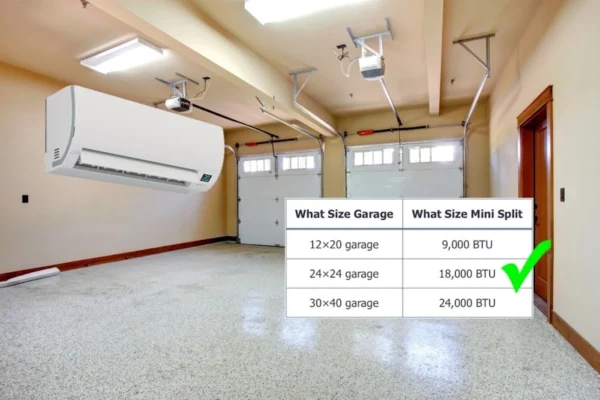Mini Split Air Temperature: How Cold/Warm Should It Be?
The air coming out of a mini split must be at a specific range for proper cooling and heating. If your mini split doesn’t seem to cool/heat your house as it should be, it is a good idea to check the temperature of the air coming out of it. But, how cold/warm should the air from a mini split be?
During normal operation, the air coming out of a mini split should be around 50-59°F in cooling mode and 92-114°F in heating mode. How cold/warm the air be coming out of a mini split is depending on various factors such as indoor/outdoor temperatures and settings.
Mini splits use variable-speed compressors. Thus, the temperature of the air coming out of a mini split vary based on the operating conditions. So, if the air temperature of your mini split is not within the above mentioned range, it may not be necessarily at fault.
How Cold/Warm Should the Air from a Mini Split Be?
Before you jump into thinking there is something wrong with your mini split, here is some facts on the supply air temperature of a mini split under standard operating conditions:
| Mini Split Size | Return Air Temperature (Cooling/Heating) | Supply Air Temperature (Cooling/Heating) | Outdoor Temperature (Cooling/Heating) |
|---|---|---|---|
| 9,000 BTU | 80/70 °F | 58/92 °F | 95/47 °F |
| 12,000 BTU | 80/70 °F | 57/100 °F | 95/47 °F |
| 18,000 BTU | 80/70 °F | 52/112 °F | 95/47 °F |
In general, bigger size mini splits (larger capacity) can produce colder/warmer air compared to smaller size mini splits. However, they rarely exceeds 60°F (15.6°C) in cooling mode and 120°F (48.9°C) in heating mode unless their capacity is way beyond the standard 9k to 24k BTU (e.g.: 36k BTU).
More importantly, mini splits in cooling mode should not have a high supply air temperature for proper dehumidification. For instance, if the supply air temperature is 62°F (16.7°C), the resulting humidity level in the room would be close to 65% which is too high.
The Rule of Thumb Delta T
One way to know if the air coming out of your mini split is within the right temperature range is by the rule of thumb delta T. As mentioned in my post about cooling coil temperature, a typical air conditioner should have a delta T of around 18-21°F (10-12°C) for cooling.
For mini splits, the temperature difference between the air going into the unit and the air coming out of the unit can stretch as much as 22-28°F (12.3-15.6°C) in cooling mode. However, that’s based on 80°F (26.7°C) intake air temperature. As the intake air temperature reduces (room is cooled), the supply air temperature doesn’t change proportionally. Instead, the cooling capacity reduces.
So, a better way to check if your mini split is producing cold enough air is by subtracting the target room temperature by 20°F (11°C). For instance, if the desired room temperature is 75°F (24°C), the air coming out of your mini split should be around 55°F (13°C). Otherwise, your room will not be cooled to the desired temperature.
Factors That Affect Mini Split Air Temperature: Why Your Mini Split is Not Cold/Warm Enough?
Mini splits have built-in programs to control their operation including their supply air temperature. They use sensors to capture what’s going on inside and outside of the house for optimal performance.
If the air coming out of your mini split seems to be too hot or too cold, check if any of the following factors that can affect mini split air temperature is causing it:
1. Outside Temperature is Too High or Too Low
In cooling mode, the air coming out of a mini split should be around 50-59°F (10-15°C) at standard cooling conditions. At standard conditions, the outdoor temperature for mini splits is 95°F (35°C). If the outdoor temperature is currently exceeding 95°F (35°C), the air coming out of your mini split may be higher than 58°F (14.4°C).
In heating mode, the air coming out of a mini split should be around 90-114°F (32.2-45.6°C), at standard heating conditions which the outdoor temperature is 47°F (8.3°C). If the outdoor temperature is below 47°F (8.3°C), your mini split may not be able to heat the air to 92°F (33.3°C).
The same goes to other types of air conditioners. See my detailed explanation on how outside temperature affects air conditioners in general.
If that’s the case, you might underestimated the cooling or heating requirement in your house. In other words, your mini split is undersized.
2. Your Mini Split Refrigerant Level is Too Low or Too High
Mini splits are designed to work within a range of refrigerant volume. If there is too much refrigerant in the system, the air coming out of your mini split will be higher than 58°F (14.4°C) which can cause insufficient cooling in your house.
On the flip side, if the refrigerant level in your mini split is too low, you may measure an air temperature lower than 52°F (11.1°C) but that might not be necessarily a good thing because your mini split may soon freeze up.
Either way is not ideal for your mini split. Make sure that your mini split is operating within the acceptable refrigerant pressure range to avoid shortening its lifespan.
3. Your Mini Split is Too Dirty – It’s time to clean!
Mini splits transfer the heat from the air to the refrigerant. In order for this heat transfer process to be good, the evaporator coil must be sparkling clean. If it is dirty, less heat will be removed from the air which may be the reason why the air coming out of your mini split is high (in cooling mode).
Similarly, in heating mode, if your mini split is too dirty, the refrigerant won’t be able to release as much heat into your house. Consequently, the air coming out of your mini split is too low that it can’t keep your house warm and toasty.
Cleaning your mini split is easier than you think. See my detailed guide on mini split filters, coils and blower wheel cleaning.
4. Improper Refrigerant Mixture Ratio (R410A Mini Split)
Mini splits that use R410A refrigerant need to maintain a certain refrigerant mixture ratio in order to function properly. If you have been refilling your mini split multiple times, the refrigerant mixture may not be at the proper ratio and thus, the air coming out of your mini split won’t be cold/warm enough.
In that case, you’ll need to vacuum and recover all refrigerants and refill the system with new refrigerant. You might want to check out my post on how to charge a mini split before you decide to do it yourself or hire a technician.
Supply Air Temperature of Ducted Mini Splits
If you have a ducted mini split, the only feasible way to measure the supply air temperature is at the vent outlet. In this case, duct losses may contribute to the high/low air temperature.
Typically, a temperature rise of 1.5°F (0.8°C) occurs on a 100 ft long duct. In practice, you may only have a temperature rise of about 0.3°F (0.16°C) for a 20 ft duct.
If you have a poorly insulated duct, the temperature rise may be significant. Hence, the air coming out of your ducted mini split may go from 58°F (14.4°C) to 60°F (15.6°C) where it is too high for proper cooling.
To verify that, you need to measure the air temperature right at the outlet of the ducted mini split. If the temperature is good, then you need to do something with the duct insulation to reduce the temperature rise.
Conclusion
Overall, a well-installed mini split should have a supply air temperature of about 50-59°F during cooling and 92-114°F during heating. While there are factors that can affect the air temperature of a mini split, it should be around 20°F (11°C) below the desired room temperature for proper cooling.
In short, the answer to how cold should the air be coming out of a mini split is 50-59°F. And, the answer to how warm the air should be coming out of a mini split is 92-114°F.
Lastly, consider my Mini Split (eBook) if you want to know how can you use Mini Split in your house. If you still have doubt or not feeling confident enough, feel free to consult me.
Consultation Service
Ask me for HVAC advice such as brand selection, best model, benefits, features, placement, duct size, grille size, how to design, design check, verification and other HVAC related queries.
If you have anything to add (or ask) about this topic, leave a comment down below!


